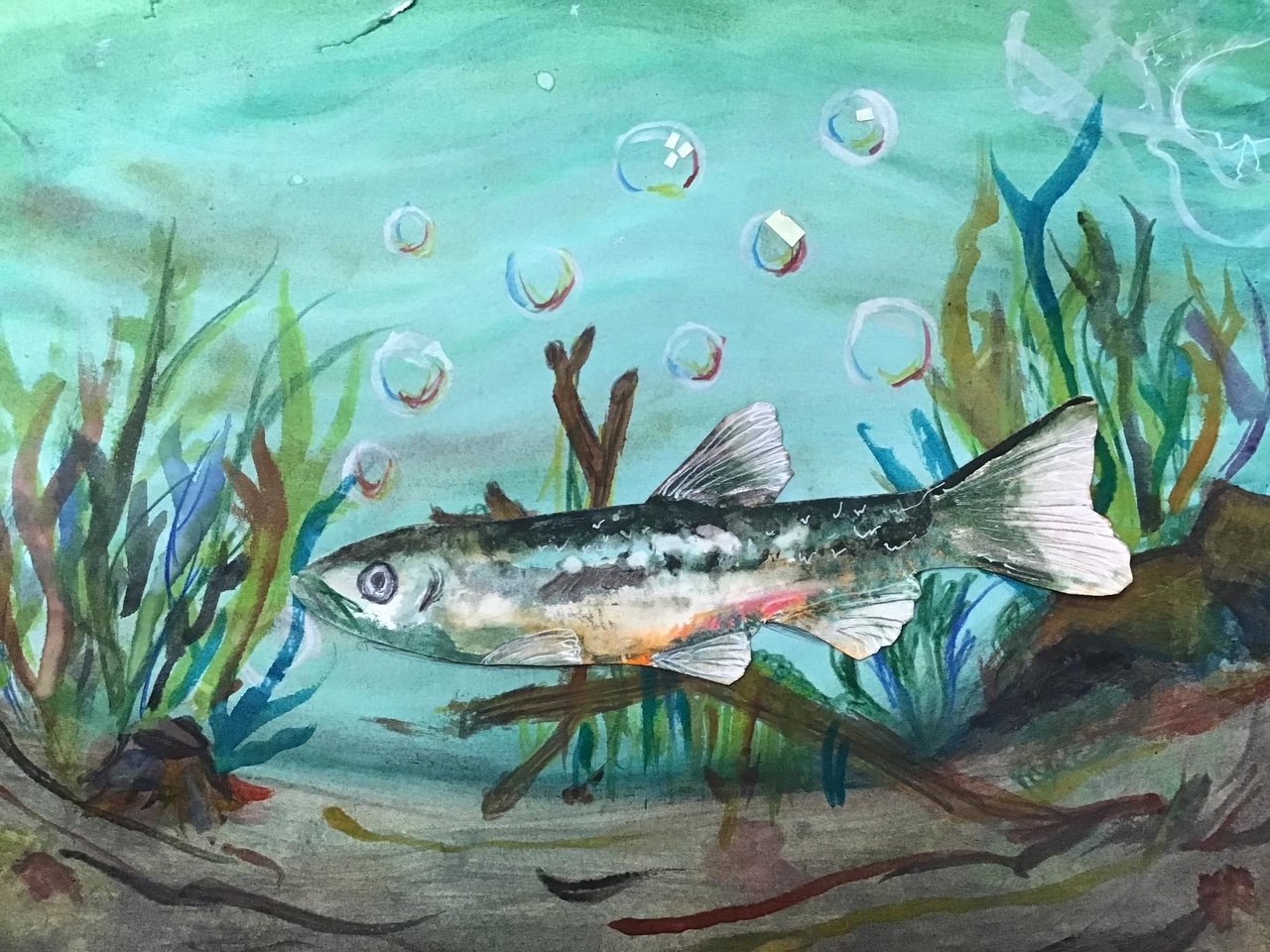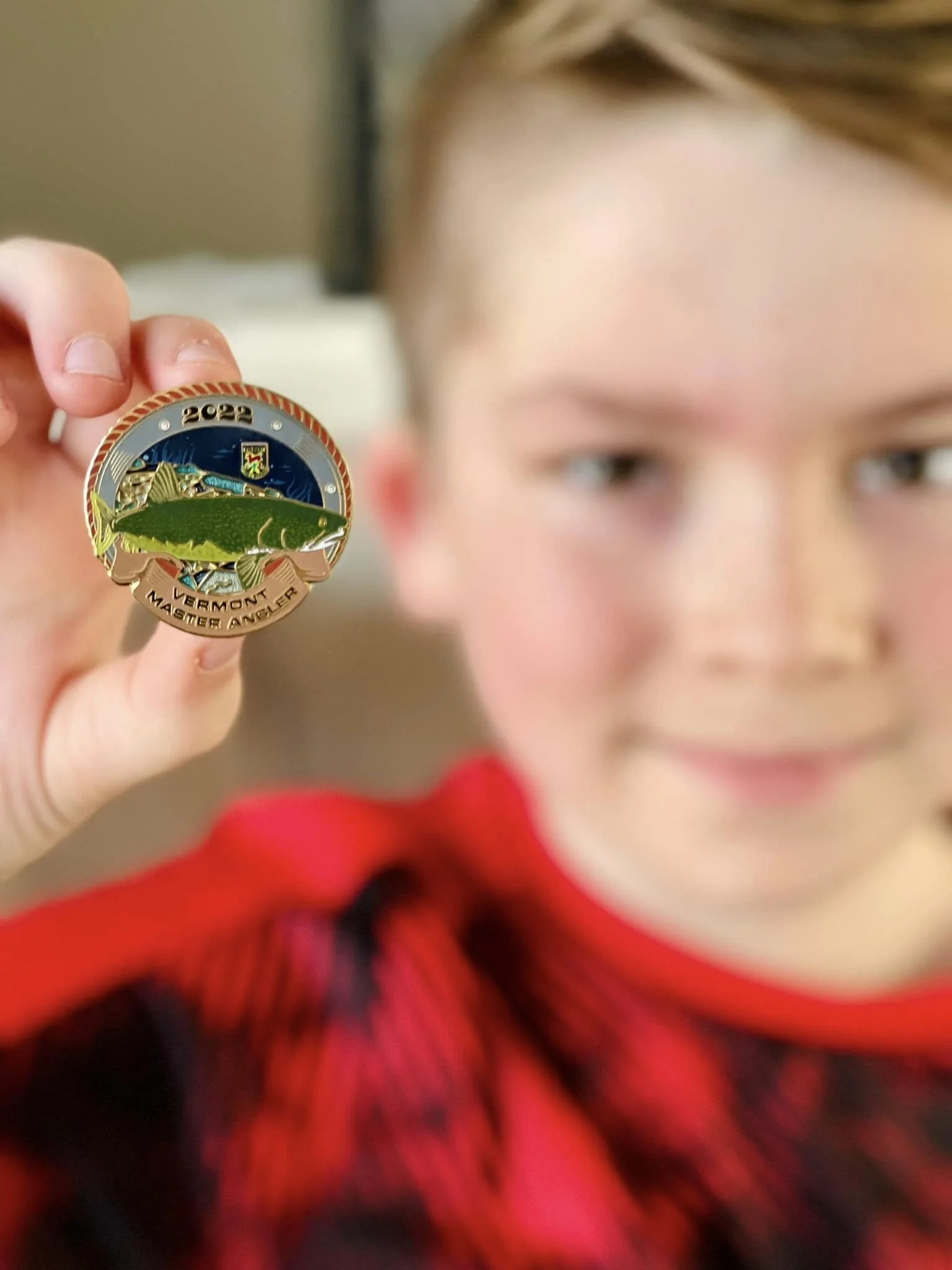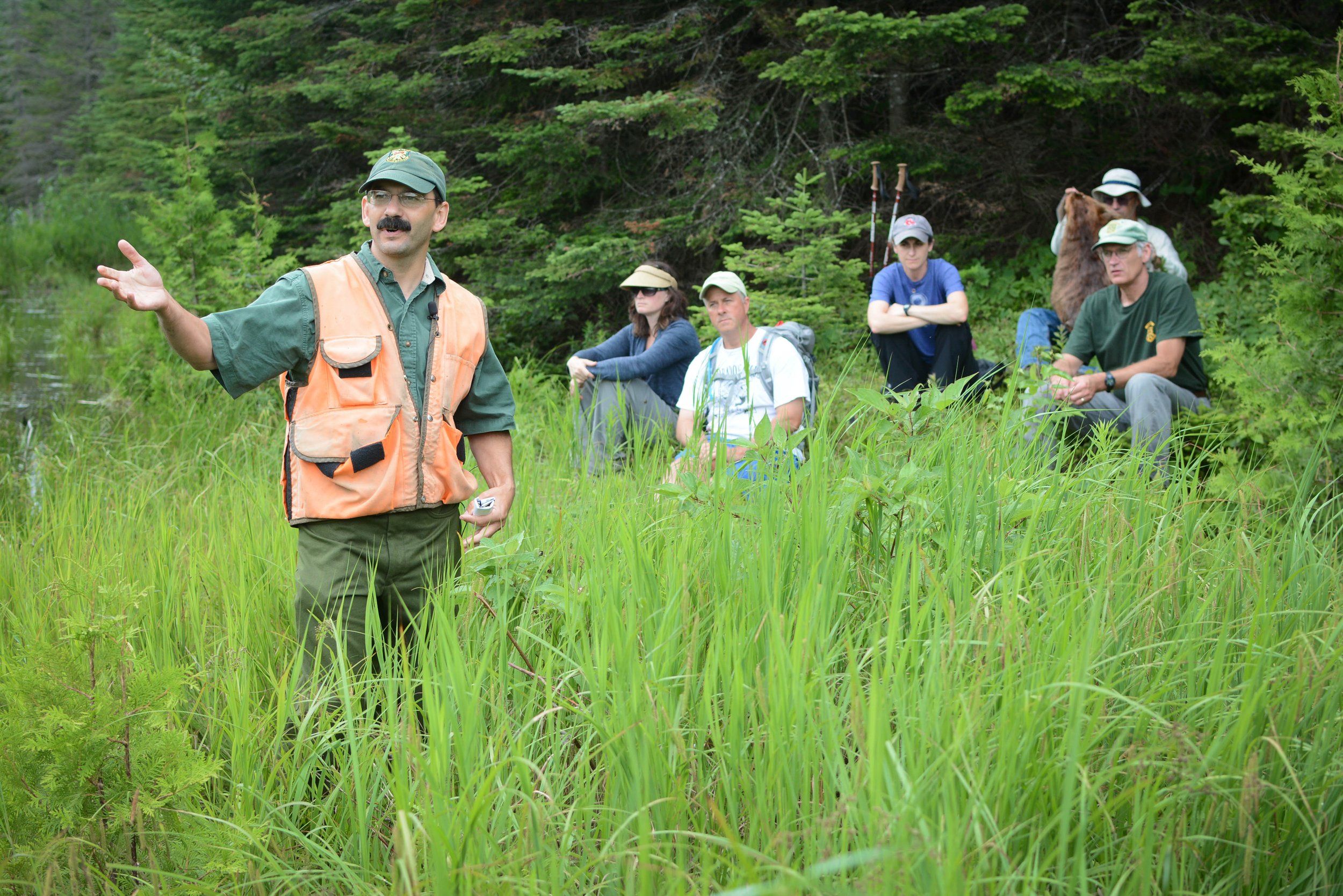Fish & Wildlife News
May 12, 2023 | By Waterbury Roundabout The following items are compiled from recent news releases from the Vermont Department of Fish & Wildlife.
Winners announced for K-12 student Fish Art Contest
Click to enlarge and read captions. Art images courtesy Vt. Fish & Wildlife Department
After reviewing 311 submissions from student artists in grades K-12 around Vermont, the state Fish & Wildlife Department announced the winners of its 2023 Vermont Student Fish Art Contest. The contest is held in partnership with Wildlife Forever, a national nonprofit wildlife conservation organization with a mission to promote education.
Participants were asked to choose a fish species found in Vermont waters, create an illustration and write a one-page creative essay on the species.
“The Fish Art Contest is a way for Vermont students to use their creativity and strengthen their knowledge and connection with our environment,” said Vermont Fish and Wildlife Department Education Specialist Corey Hart. “This year’s artworks included many less-familiar species like the brown bullhead and slimy sculpin, as well as better known species like the brook trout. The results speak to the diversity of life in our aquatic ecosystems, and our students’ curiosity to explore that diversity.”
Winners were chosen in four categories: Grades K-3, 4-6, 7-9, 10-12. (photos of each above). Winners receive a fishing rod and reel and their art will be entered into a selection process to be featured in the department’s forthcoming 2024 Fishing Guide and Regulations publication.
Vermont’s 2022 Master Anglers include 25 youth
The Vermont Fish & Wildlife Department has released the Vermont Master Angler Program 2022 Annual Report with 1,064 entries and 79 Master Angler Award recipients that include 25 youth anglers. The program sets size benchmarks for 33 species and recognizes the achievements of anglers who catch trophy-sized fish from Vermont waters. It celebrates the clean water and healthy habitats that allow fish to survive and grow to exceptional sizes.
Colby Farmer with his Master Angler lapel pin. Courtesy photo
Anglers catching a fish exceeding the minimum qualifying length in any of the 33 species categories can receive a certificate commemorating their catch. Their names and catches are included in the Vermont Master Angler Annual Report. Those who catch five or more species that exceed the minimum qualifying lengths in the same calendar year are recognized as Vermont Master Anglers and receive a unique lapel pin at the end of the year. (Youth anglers have a slightly lower minimum qualifying length for each species.)
State fisheries biologist Shawn Good said 2022 saw the second-highest number of entries since the program began in 2010. “One of the best things about this program is that it provides families with a little extra incentive to get outside and enjoy some quality time together on the water,” Good said.
An example is St. Albans angler Derrick Farmer and his 11-year old son, Colby, who participated for the first time in 2022. The program gave them goals to aim for. “This is such a cool program,” said Derrick. “We put in quite a bit of effort overall, but the Master Angler Program kept Colby engaged and wanting to learn how to target different species.”
Colby caught seven trophy fish species in 2022 to earn his Master Angler pin. He caught a walleye, a pumpkinseed sunfish, a northern pike, and a yellow perch while ice fishing and added a lake trout, a smallmouth bass and a freshwater drum later in the year. “His goal this year is to do it again, but with different species,” his dad added.
More Fishing Notes
Baitfish regulation change
The Vermont Fish & Wildlife Department proposes changes to the state’s baitfish regulation that will change some terminology and update the lists of waters where baitfish may not be used. The Vermont Fish and Wildlife Board has held two public hearings about the changes and is accepting public comments through May 19 via email at ANR.FWPublicComment@vermont.gov. The regulation with proposed amendments is available in the Public Hearings Schedule on the department’s website Home Page.
Trout stocking
See what's been stocked before you head out. This page is updated frequently. Select “Completed Stockings” in your search and plan accordingly: Spring '23 Stocking.
Rainbow trout
If you catch a stocked rainbow trout this year, wildlife biologists would like to know which strain you caught. More information is online at: Rainbow Trout Strain Evaluation.
Fishing clinics
Take a Let's Go Fishing clinic this season. Clinics and events will continue to be added to the calendar throughout the spring.
2023 Vermont Fishing Guide and Regulations
Available free from license agents, and online Vermont Fish & Wildlife’s website at eregulations.com/vermont/fishing. For any river, stream, lake, or pond not listed in the Index of Rivers and Streams or Index of Lakes and Ponds go to General Fishing Regulations on page 52. An overview can be found at: vtfishandwildlife.com/new-2022-fishing-regulations-overview.
Spring turkey hunting season runs through May 31
Spring turkey season is under way in Vermont through May 31. Youth and novice turkey hunting weekend was held the last weekend in April. Successful hunters in Vermont’s spring turkey seasons must report their turkey within 48 hours to the Vermont Fish and Wildlife Department. This can be done at a local big game reporting station or online at Vermont Fish and Wildlife’s website.
Last year, youth and novice hunters took 627 and 33 turkeys, respectively during the April weekend hunt and hunters took 5,589 gobblers during the regular spring season, according to Chris Bernier, Vermont’s wild turkey biologist. “Combined with the 908 turkeys taken during the fall season, hunters harvested in excess of 140,000 servings of locally sourced, free range turkey meat in 2022,” Bernier said.
Gobblers by John Hall, Vermont Fish & Wildlife photo
Tips for safe turkey hunting include:
Wear hunter orange while moving from set-up to set-up. Take it off when you are in position.
Never shoot unless you are absolutely sure of your target and what is beyond it. Look for a beard as only turkeys with beards are legal during the spring season.
Never stalk a gobbling turkey. Your chances of getting close are poor, and you may be sneaking up on another hunter.
Stick with hen calls. A gobbler call might draw in other hunters.
Always sit with your back against a tree trunk, big log or a boulder that is wider than your body. This protects you from being accidentally struck by pellets fired from behind you.
Place decoys on the far side of a tree trunk or a rock. This prevents you from being directly in the line of fire should another hunter mistakenly shoot at your decoy.
If you see another hunter, call out to them, but don’t move until they respond. You may ruin the hunt, but you may have avoided injury.
Wrap your turkey in blaze orange for the hike back to your vehicle.
“A successful hunt is one which sees ALL hunters returning home safely afterward,” said Vermont Fish and Wildlife Commissioner Christopher Herrick. Vermont Fish and Wildlife’s 2023 Turkey Hunting Guide is available online.
Leave turtles in the wild
Wild turtles need to stay in the wild to remain wild. That’s a springtime reminder from the Vermont Fish & Wildlife Department that collecting native turtles as pets is prohibited because it can harm the turtle and pose threats to wild turtle populations.
Painted turtles have colorful markings and shells. Photo by Luke Groff, VT Fish & Wildlife
“Capturing a wild turtle and keeping it as a pet, even if only for a short time, is detrimental to that individual turtle and also to Vermont’s turtle populations as a whole,” said state Herpetologist Luke Groff.
Releasing captured turtles back into the wild comes with risks as well, Groff added, such as introducing diseases or disrupting the genetics of wild populations. “Adult turtles often have well-defined home ranges and know exactly where to find shelter, food and mates. Turtles released in unfamiliar habitats are likely to be disoriented and stressed, and they may attempt to return home, potentially causing them to cross roads and be struck by vehicles,” Groff said.
Removing a turtle from the wild often means removing its reproductive contribution to the population. “Turtles are slow to develop, especially those living at northern latitudes where the growing season is short. Many of Vermont’s turtle species do not reproduce until they are at least 10 years of age,” Groff explained. “Older, sexually mature females are critically important to the long-term persistence of some Vermont turtle populations. The loss of even a couple mature females from some populations may have serious consequences.”
Turtles can be found in the wild in and around Waterbury along the Winooski River, the Little River, Thatcher Brook and other brooks and streams. Some common species include the painted turtle and snapping turtle. The wood turtle, spotted turtle and spiny softshell are rare in Vermont, and the Vermont Fish and Wildlife Department urges you to report sightings of these species to the Vermont Reptile and Amphibian Atlas.
It’s common to see turtles in the wild. When you do, Groff suggests taking a photo. “Support Vermont’s turtles by leaving them in the wild,” he said.
More information on Vermont’s native turtle species is online at the Vermont Fish and Wildlife’s website. Contact Groff at Luke.Groff@vermont.gov.
Northern Long-eared bat now endangered
The U.S. Fish and Wildlife Service’s reclassification of the northern long-eared bat from threatened to endangered status came into effect on March 31. In Vermont, the species had already received state endangered status in 2011 due to rapid and drastic declines caused by the deadly fungal disease white-nose syndrome. It received federal threatened status in 2015 after the disease had spread throughout the Northeast, but not the entire range of the species.
A researcher handles a northern long-eared bat during population monitoring fieldwork. Vermont Fish & Wildlife photo by Morgan Ingalls
As white-nose syndrome spread across the U.S. and Canada, the northern long-eared bat has experienced dramatic population declines throughout most of its range. In Vermont, this once-common species has declined by 98% in the underground hibernation sites where it overwinters. The federal reclassification comes in response to this trend.
The USFWS released a planning tool and interim guidance addressing potential impacts to development, infrastructure, and land management projects in the northern long-eared bat’s range that require federal approval, have received federal funding, or are carried out by a federal agency starting in April 2023. Non-federal projects will also be able to evaluate potential impacts to the northern long-eared bat with the USFWS planning tool.
The Vermont Fish and Wildlife Department and partners have been proactive in tracking the state’s northern long-eared bat population and implementing protections such as the 2011 state endangered designation. Because of this effort, the federal reclassification is not expected to have major impacts on Vermont landowners, land managers, or developers.
“The federal reclassification will mobilize additional resources for northern long-eared bat conservation and recovery,” said Vermont Fish and Wildlife’s mammal biologist Alyssa Bennett. “Vermonters have already done substantial conservation work for this species, placing us ahead of the curve. We are in a good position to protect high quality northern long-eared bat habitat where surviving bats occur, and to manage our forests with this and other wildlife species in mind.”
Vermont Wildlife Course for Educators, July 16-21
Paul Hamelin leads a discussion at a beaver pond. Vermont Fish and Wildlife’s summer course for teachers and other educators will be held July 16-21 at Buck Lake in Woodbury, VT. Photo by Vt. Fish & Wildlife
Vermont’s popular fish and wildlife summer course for teachers and other educators will be held July 16-21at the Buck Lake Conservation Camp in Woodbury.
The interactive field course that gets educators out into Vermont’s streams, forests and wetlands with some of the state’s leading natural resource experts. Now in its 38th year, “Wildlife Management and Outdoor Education Techniques for Educators,” is a one-week, three-credit graduate course taught by Vermont Fish & Wildlife and other Agency of Natural Resources staff through Castleton University.
“Wildlife resources are important to all Vermonters in one way or another,” says Fish and Wildlife’s Outreach Director Alison Thomas. “If educators can get connected with the outdoors and in turn expose their students, then many of these students will be able to make informed decisions about Vermont wildlife and their habitat needs.”
The course is hands-on and is geared for teachers from Pre-K through 12th grade from any discipline -- math, language arts, physical education, history, etc. -- to improve instructional strategies and make lesson plans more relevant to their students, Thomas said.
“It is a great mix of new and old with all of it being incredibly helpful and memorable. We believe during these difficult times, it is important now more than ever that we foster personal relationships with the natural world, habitat and wildlife and encourage an individual’s connection with the outdoors,” she said.
Tuition is $710 for the course and it covers books, food and lodging. A limited number of partial scholarships are available. A course description, schedule of activities and registration information are available by email from Thomas. In addition, reasonable accommodations for persons with disabilities are available on request at no cost. Contact Thomas at alison.thomas@vermont.gov or 802-371-9975 or 1-800-253-0191 (TTY).
Vermont to allocate moose hunting permits for 2023
Moose traveling together in the Nulhegan Basin in Vermont’s Northeast Kingdom. Photo by John Hall
Using a lottery, the state this year will allocate 80 either-sex moose hunting permits and 100 antlerless moose hunting permits for a hunt limited to Vermont’s Wildlife Management Unit E in the northeastern corner of the state. The science-based hunt is anticipated to harvest about 100 moose, or 10% of the more than 1,000 moose currently estimated to live in the region where moose are most abundant in Vermont.
Permit applications are now available through June 21 on the Vermont Fish and Wildlife Department’s website. Fees are $10 for Vermont residents, $25 for nonresidents. Lottery winners need to purchase resident moose permits for $100 and nonresident moose permits for $350. Winners are also required to hold a current year Vermont hunting or combination hunting and fishing license.
Wildlife officials said the goal of the moose hunt is ultimately to improve the health of moose in the northeast region by reducing the number of moose and thereby reducing the abundance and impact of winter ticks.
Winter tick infestation on a moose. Vermont Fish 7 Wildlife photo by Jake DeBow
“Moose are the primary host for winter ticks, and higher moose densities support high numbers of winter ticks which negatively impact moose health and survival,” said Nick Fortin, Vermont Fish and Wildlife’s moose project leader.
The department worked with University of Vermont researchers to study moose health and survival in Unit E. A total of 126 moose (36 cows, 90 calves) were fitted with GPS tracking collars. The animals showed that chronic high winter tick loads caused the health of moose in that part of the state to be very poor. Survival of adult moose remained relatively good, but birth rates were very low and less than half of the calves survived their first winter, Fortin said.
“Research has shown that lower moose densities support relatively few winter ticks that do not impact moose populations,” Fortin explained. “Reducing moose density decreases the number of available hosts which in turn decreases the number of winter ticks on the landscape.”
The 2023 Moose Harvest Recommendation and related information about moose research and management are available on Vermont Fish and Wildlife’s website. Find more details on the lottery and applying online as well.
Data compiled from deer teeth harvest available now
Deer tooth image courtesy Vermont Fish & Wildlife
Hunters who provided the Vermont Fish & Wildlife Department with a tooth from their deer in 2022 can now find out how old their deer was by visiting the department’s website.
A total of 1,820 usable deer teeth were received from successful hunters last year. Combined with the 935 deer examined by biologists during the youth and regular November seasons, the department was able to get accurate ages for 2,755 Vermont deer.
“We are thankful to the thousands of hunters who supported our deer management efforts by providing us with a tooth from their deer,” said Deer Project Leader Nick Fortin. “This age information helps us estimate deer population size and assess the health of deer. It is also critically important for understanding the effects of new hunting regulations on the deer population and buck age structure.”
The oldest deer harvested was a 19-year-old doe taken in Pittsford. The oldest buck was 10 years old and was taken in Lincoln. The deer ages can be found on the Vermont Fish and Wildlife website with a link from the home page. The state’s 2022 White-Tailed Deer Harvest Report is also complete and posted online on the department’s website.
















